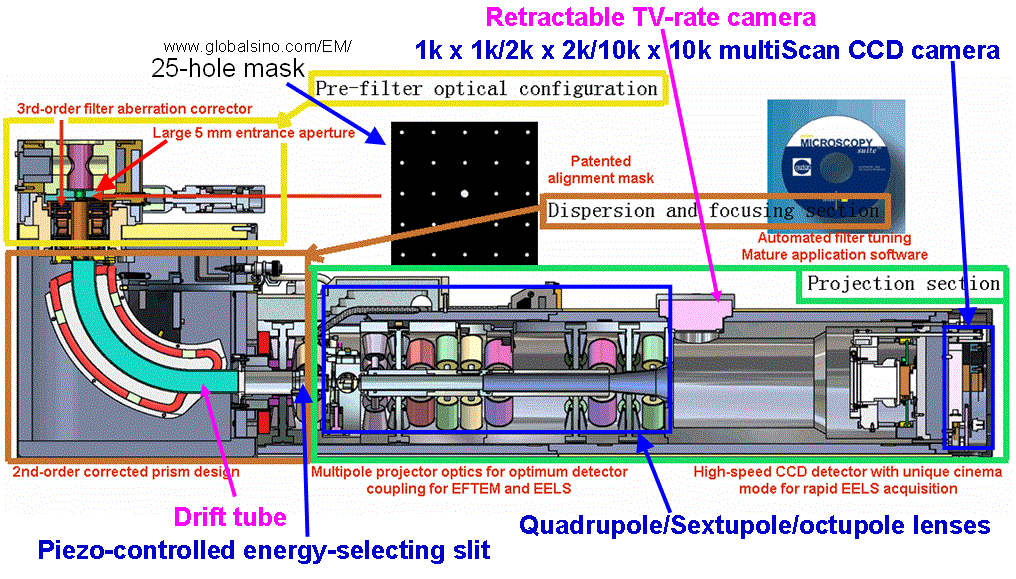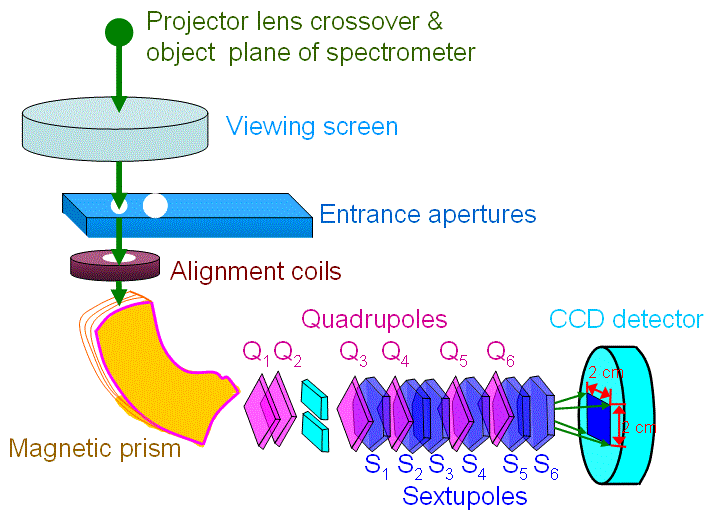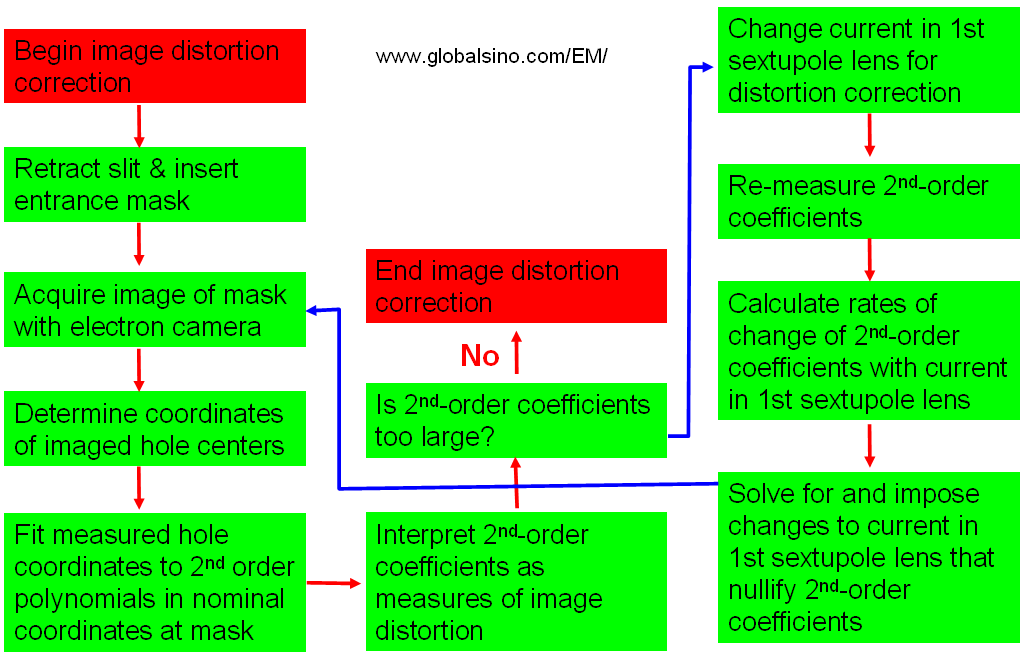=================================================================================
Both the words “sextupole” and “hexapole” are essentially talking about the same thing in EMs. However, the name “hexapole” introduces one Greek-based number in a set of Latin-based numbers and is easier to pronounce.
Sextupole elements can be conveniently used to produce three-fold symmetry of electromagnetic fields. These elements are normally employed in charged-particle optics to compensate for the primary second-order aberrations arising in the systems with a curved optical axis, such as spectrometers or imaging energy filters. On the other hand, an additional function of the prisms in sector magnet spectrometers (including GIF) is to correct the second-order aberrations for a given distance (typically ~70 cm) between the object and the prism. Small adjustment of coupling the prism with the TEM optical system can be made using sextupoles near the prism and by adjusting the mechanical tilt of the prism.
Figure 3941a shows the schematic illustration of a GIF (Gatan Imaging Filter) camera. The sextupole lens used to finely tune the focus in the GIF system is also indicated in the figure.

Figure 3941a. Schematic illustration of a GIF (Gatan Imaging Filter) camera.
By using a two-dimensional CCD array as the detector, Gatan imaging filters (GIFs) used both quadrupole and sextupole lenses to correct spectrometer aberrations.
A EELS spectrometer consists of a couple of lenses. For instance, Enfina ER has 2 hexapoles and 5 electromagnetic round lenses, 7 dipoles for alignment, and 1 quadrupole and 1 additional hexapole for astigmatism correction.
For the most common EFTEM unit as shown in Figure 3941b, the detection system consists of a slow scan CCD array detector rather than a single line of diodes used in PEELS detector.

Figure 3941b. Gatan imaging filter using CCD detector.
Figure 3941c shows an example of procedures of image distortion correction in FETEM.

Figure 3941c. Example of procedures of image distortion correction in FETEM.
|

